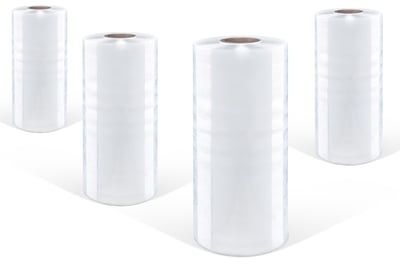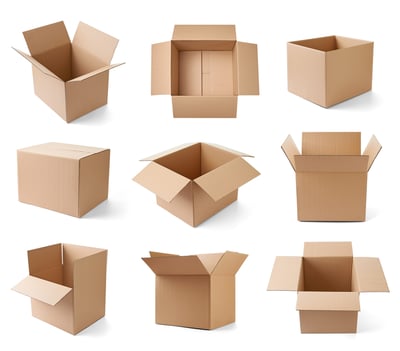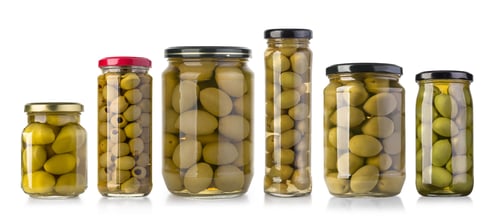Exploring Plastic Packaging Alternatives: Pros And Cons
When it comes to packaging materials, plastic is so common. It is found in practically every packaging application you could possibly imagine. There are literally billions of tons of plastic in our world today. There are even millions of pounds of new plastic being produced every year!
And while some companies such as Coca-Cola have stood their ground in defense of using plastic, many companies are being told by their customers that plastic needs to be phased out to make way for more environmentally friendly options.
You are probably here because you are researching plastic packaging alternatives. Maybe you are the owner of a new start-up, or perhaps you have been in business for decades and are trying to meet the environmental demands of your consumer base.
Regardless of what factors set your search in motion, you know that you need to find potential replacements for plastic packaging. With over 60 years in the packaging industry, Industrial Packaging has seen thousands of different types of materials come and go. We’ve helped countless businesses optimize their packaging design when making the transition to environmentally friendly alternative packaging materials.
In this article, we will take a look at a few different varieties of sustainable, recyclable, and environmentally friendly plastic packaging alternatives that are sure to draw the attention of your customers and prospects alike!
Bio-Plastic Shrink Films
There are a borderline insane amount of products that are packaged with shrink film. Electronics, vegetables, board games, toys, and so many other products worldwide are packaged with shrink film.

Traditional shrink film is primarily made out of plastic. With so many products being packaged with shrink film, it is no wonder that there is so much plastic in our landfills. Shrink film is one of many kinds of packaging materials that are slowly being discussed as problematic. As a result, many consumers want some earth-friendly alternative or replacement.
To answer these demands, several companies (and eventually many more) are working on new formulations of shrink films that are made from bio-plastics.
What Is Bioplastic?
Bioplastics are a kind of plastic material made from biodegradable sources, such as vegetables, rice, and other organic and plant-based compounds. Bioplastics are commonly created from agricultural products and microorganisms.
Bioplastic based shrink films such as Nature Star (made from rice compounds) or Nurel are made from bio-polymers derived from plants. These types of shrink films are biodegradable and break down much faster than traditional plastics, which can take over one thousand years to degrade completely.
In this way, bioplastics are often thought to be far more earth-friendly than traditional plastic shrink films. The truth is a little more complicated. While bioplastics will break down much quicker than regular plastics, they must be adequately composted at in-home compost heaps or in more extensive industrial compost facilities.
Bioplastics that end up in landfills or those not properly disposed of into the appropriate composting applications can take longer to break down than bioplastics which are properly disposed of. Additionally, bioplastics are not currently recyclable.
When bioplastics end up in recycling facilities, they can contaminate recyclable materials. This results in bioplastics needing to be disposed of into a landfill, which totally defeats the purpose of using these materials in the first place.
With the proper education around the correct use and disposal of bioplastics, these materials can eventually be an excellent alternative to plastic shrink films.
Need Help Designing Your Packaging?
Corrugated Boxes
Corrugated boxes are another alternative to plastics. They have been around for a very long time and have been a popular form of packaging for decades. Cardboard boxes are good because they are recyclable; however, many of them are not recycled due to contamination in single-stream recycling or people just deciding to throw them in the trash.

If they end up in a landfill, they decompose and produce methane, a problematic greenhouse gas. But, if they are properly recycled and not contaminated with food or liquids, they can be viable alternatives to plastic packaging.
Glass Containers
Glass is one of the oldest packaging materials in the world. It has been popular for hundreds of years. Glass suggests an air of quality and luxury that few other packaging materials can claim. Glass is used for packaging all kinds of products. From wine and whiskey to candy and popcorn, glass has been used to package millions of items all over the world.

Glass is often considered an excellent alternative to plastics because it is easy to recycle. And while that is true, glass, unfortunately, has a much higher carbon footprint than plastic. While not an environmental concern, it should also be noted that glass is also rather heavy, which makes it an expensive material to ship.
However, glass containers are becoming quite popular with consumers. They are viewed as a viable, more environmentally friendly material, despite the challenges associated with its carbon footprint.
One way to combat the carbon issue is to use thinner glass containers. Still, extra care should be taken when doing so. Thinner glass makes for more fragile packaging that can break easily.
LOOP
Loop is not an alternative packaging material, so much as it is a complete re-thinking about packaging in general. It is at once both modern and classic in ideals and aesthetics.
The idea behind loop is to get as many corporations and businesses of all shapes and sizes to hop on the circular or "closed-loop" culture. The idea is to use various types of refillable containers repeatedly until they reach their end of life. At this point, they would be recycled.
So, for example. Let's say we are talking about ice cream. Rather than buy a pint of ice cream at the supermarket, which is made out of paperboard or cardboard and is a single-use container, we switch to using metal containers instead.
After we have emptied several of these metal containers, we ship them back to the ice cream maker. They then clean the containers, refill them, and resell the newly filled ice cream containers back to us. The process repeats itself until the container reaches its end of life. At that point, it’s totally broken down and recycled.
While it is an excellent idea from an environmental standpoint, the notably higher costs of using loop due to the shipping, cleaning and refilling of the containers is very off putting for many businesses. It also struggles regarding carbon footprint as many of the materials used in LOOP (such as glass and metal) are heavier and produce more carbon during shipping.
The Hard Truth About Plastics
While it is a hard pill to swallow, the truth remains, plastic is still the most environmentally friendly choice when it comes to packaging materials. Now, I can hear you yelling at your laptop, that can't be! You lie! Alas, I do not.
And, if you look at the data surrounding carbon footprints of all the most popular packaging materials, plastic still generates the least detrimental environmental impact of any of them.
As if that was not reason enough to reconsider replacing plastics for packaging, plastics also remain one of the most affordable packaging supplies currently available worldwide.
So, while you can certainly take your pick of a host of different plastic packaging alternatives, you will be hard-pressed to find one that is genuinely more environmentally friendly. This will remain true until we take the next step in technological evolution that will allow us to create new materials with lower carbon footprints.
Porch offers up a great article on how to live a sustainable lifestyle at home that can help beyond your business needs.
If you would like to explore alternatives for plastic packaging, feel free to peruse our learning center which features various articles about bio-films, plastic alternatives and other environmentally friendlier packaging materials.
About Nathan Dube
As the Digital Marketing Specialist at Industrial Packaging, I am honored to create content for such a phenomenal company and work with one of the greatest teams in the Packaging Industry. Whether creating a video, writing blog posts or generating other pieces of content and multimedia, I am always excited to help educate and inspire our prospects and clients to reach their highest potential in regards to their packaging processes and needs.




